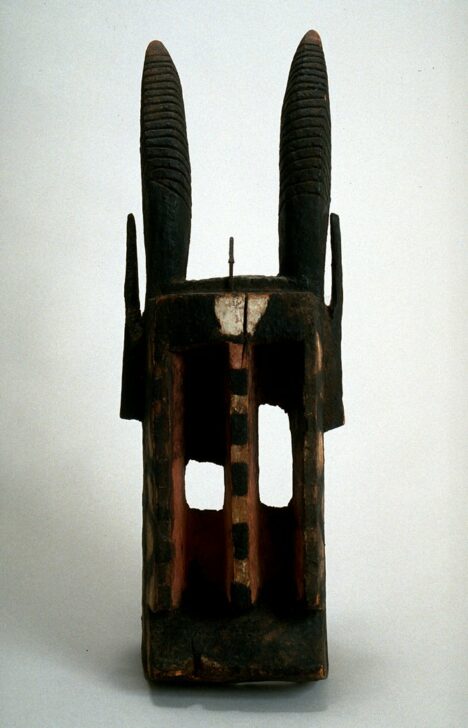Walu Antelope Mask
Dogon

Description
Among the Dogon, masks are carved by those who wear them in ritual ceremonies. For this reason they are highly individualized and often somewhat crude. This mask's simple box-like construction, with its unevenly carved eyes and hastily painted markings, attests to the non-professional status of its carver. Nevertheless, the physical appearance of the mask is less important than its power when worn in the ritual dance. These masks are believed to trap and redistribute cosmic forces and to control the spirits of the dead which are considered harmful to society if left unattended. The metal spikes protruding from these masks are thought to strengthen their ritual power. This mask represents Wilu, the antelope. When the Dogon first began to hunt, Wilu was a bush animal killed for food. To appease his angry spirit and commemorate his sacrifice, the Dogon carved masks of him and danced them at funerals.
Usage Rights:
If you are interested in using an image for a publication, please visit https://umma.umich.edu/request-image/ for more information and to fill out the online Image Rights and Reproductions Request Form.